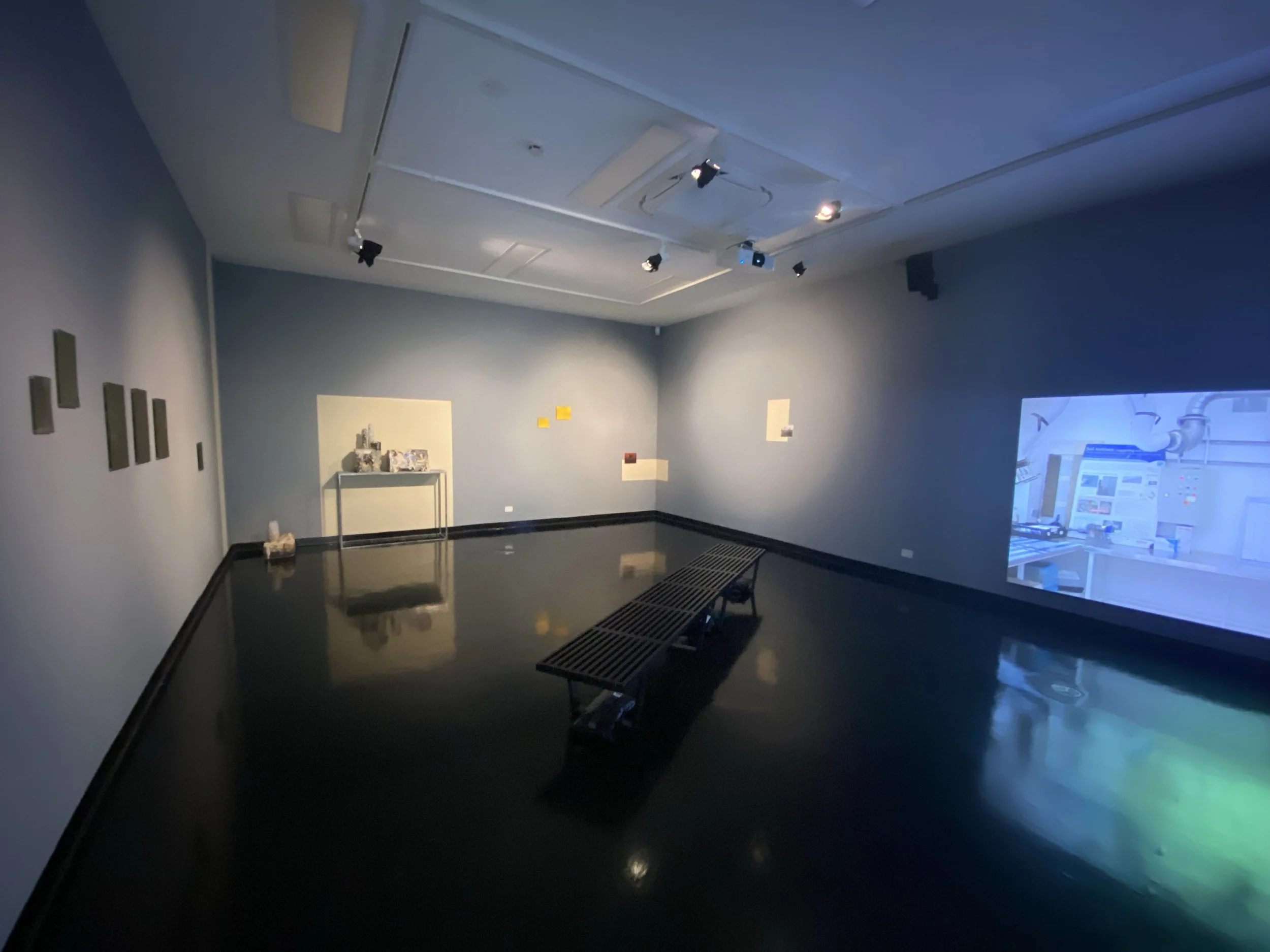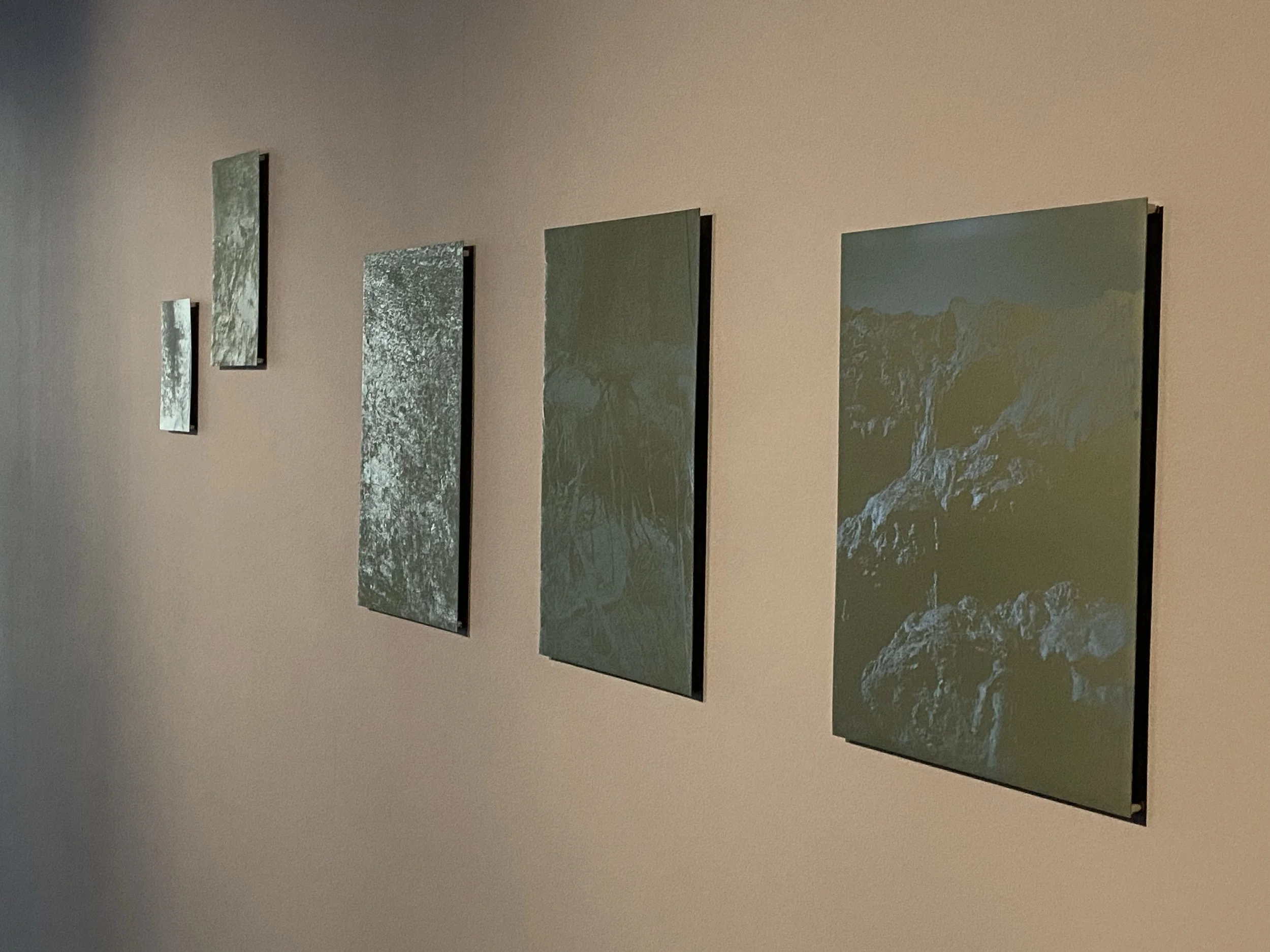Where there is wind (there will be dust)
2023 - 2024
Where there is wind (there will be dust), 2024
2-channel linear video
06:25 mins
Dust is picked up and carried through the air, traversing state boundaries, and permeating everything in its wake. This work draws directly from conversations with livestock farmers, field recordings of Lake Hume and its weir, a farmer threshing his fave bean crops, a slag heap in Broken Hill, and scientists and lab technicians at the Yanco Soil Archive and CSIRO National Soil Archive.
Dust contains memories and evidence of human activity and of inaction. When collected, stored, and studied, dust can reveal information about who we are and how we live. The particles contained within and recorded in data sets contain knowledge of our past, present, and potential future.
In an accompanying series of photopolymer photogravure plates, images are both there and not there. These 'preimages' or 'afterimages' hold the possibility of their own vanishing, or of the image never really having been there in the first place. These images are of Kennaook/Cape Grim, slag at Broken Hill, ice-cores, Lake Hume, and the Murray River. They’re depicting sites and places where visible and invisible violence are both present and past.
This work was developed through 'Parched: Cultures of Drought' – a research project exploring how people and communities have lived through and managed drought over time and in different regions.
Images are of the work installed at the La Trobe Art Institute, Bendigo, 2024.
Sculptural works ‘crust to core (responding to jb),’ 2024, by Adam John Cullen.
I've lived through many seasons of drought.
Seasons of drought are associated with shortage of water and hot weather, maybe dust storms and searing heat.
Those things sort of go in a pattern.
They have peaks and then after those peaks there comes a cool off.
Cool patterns of weather, sometimes rain.
Sometimes your drought can be right in the wintertime when it's cold, but you will have very light or no rain at all.
In those months where we are needing rain, which is through the winter and into spring,
they are the focal points of how a drought begins.
If you miss those rains in the spring, they don't complete the cycle of finishing your crops.
They don't come to their full bounty.
It's often the year after the drought that is the hard year.
We don't hear it so much in the news because we're all so glad it's rained,
but it's then those pressures that come on us.
Where's the next dollar coming from?
People talk about the black dog.
I think it's the year after the drought that it comes.
You can just see by how bare the ground is.
Any strong wind will create dust.
There were whirlwinds.
Where there is wind there is dust.
Our house was very not very well sealed, so it would go right through the house.
We spent a lot of money putting in better sealed windows.
One day, in 2008, there was this strange, like, not dust.
Dust would normally envelop things, but the whole sky just went brown.
It got darker and darker. At 2:00 in the afternoon.
It nearly blotted out the whole sky.
And yet I wasn't enveloped in it.
I've never seen anything like that.
High strong winds and gusts of dust.
Get the clothes off the line.
It's going to pass within a few hours.
Interview with Graeme Wenke, Farmer, Walla Walla, NSW, 2023

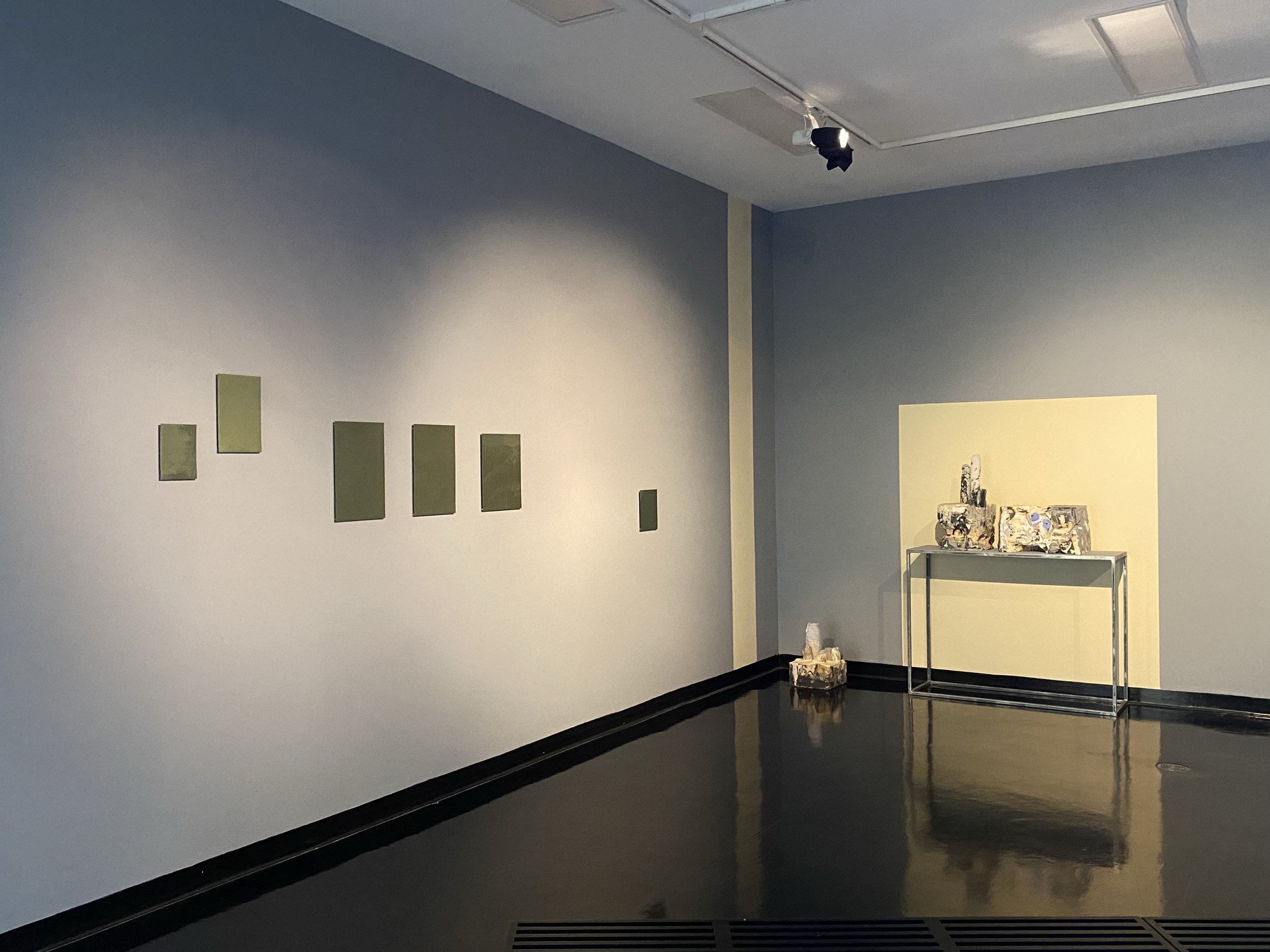
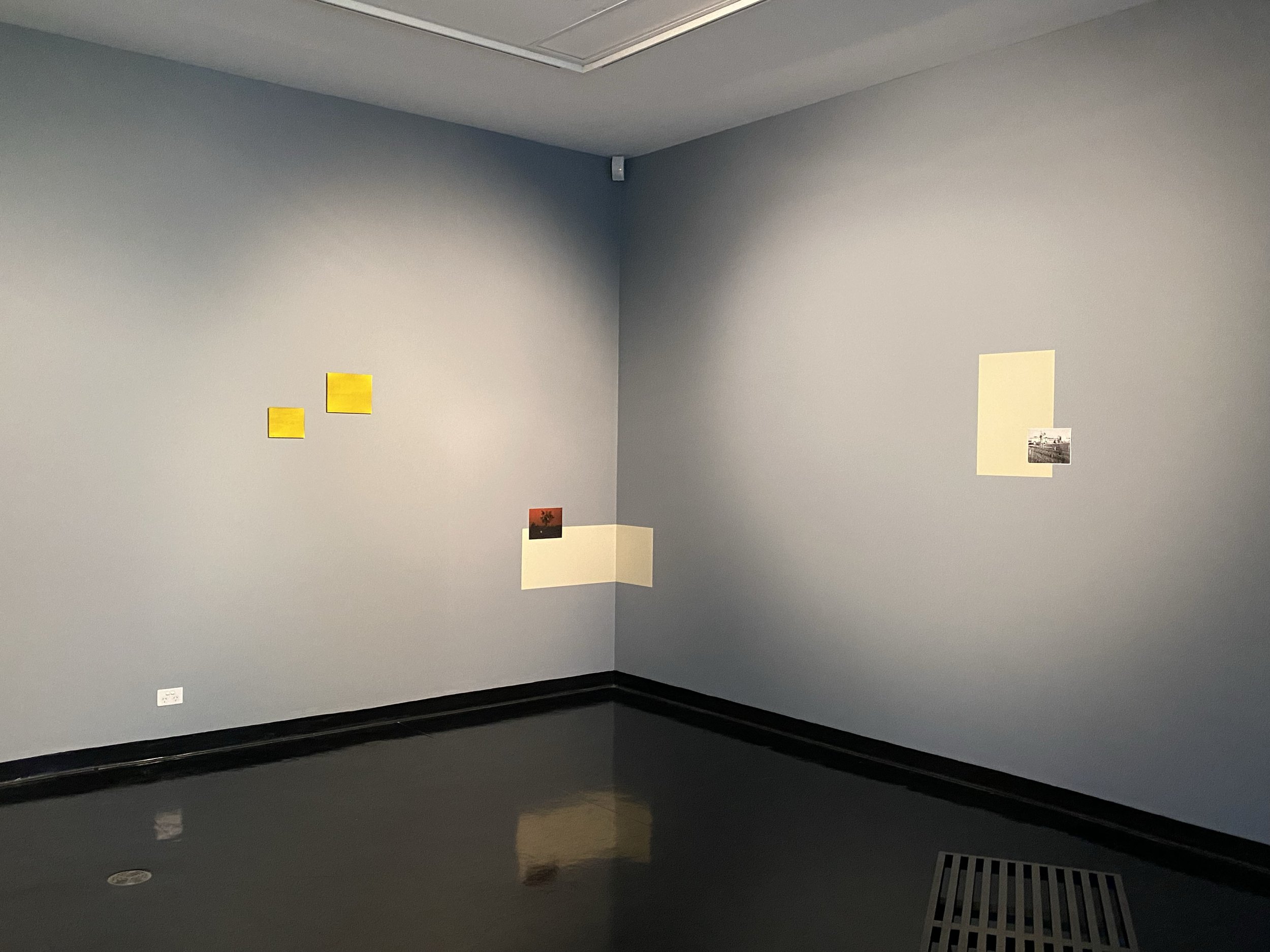

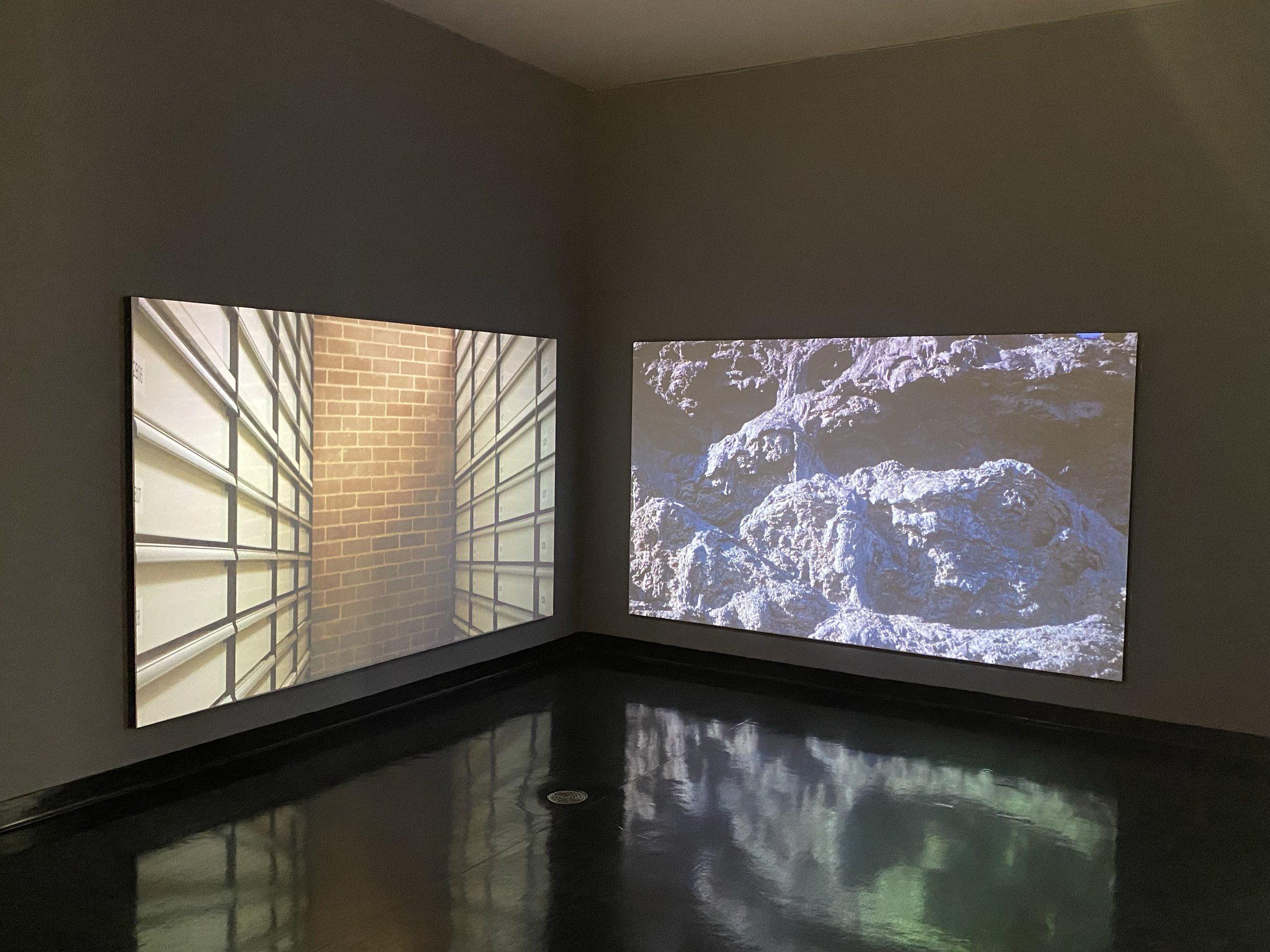
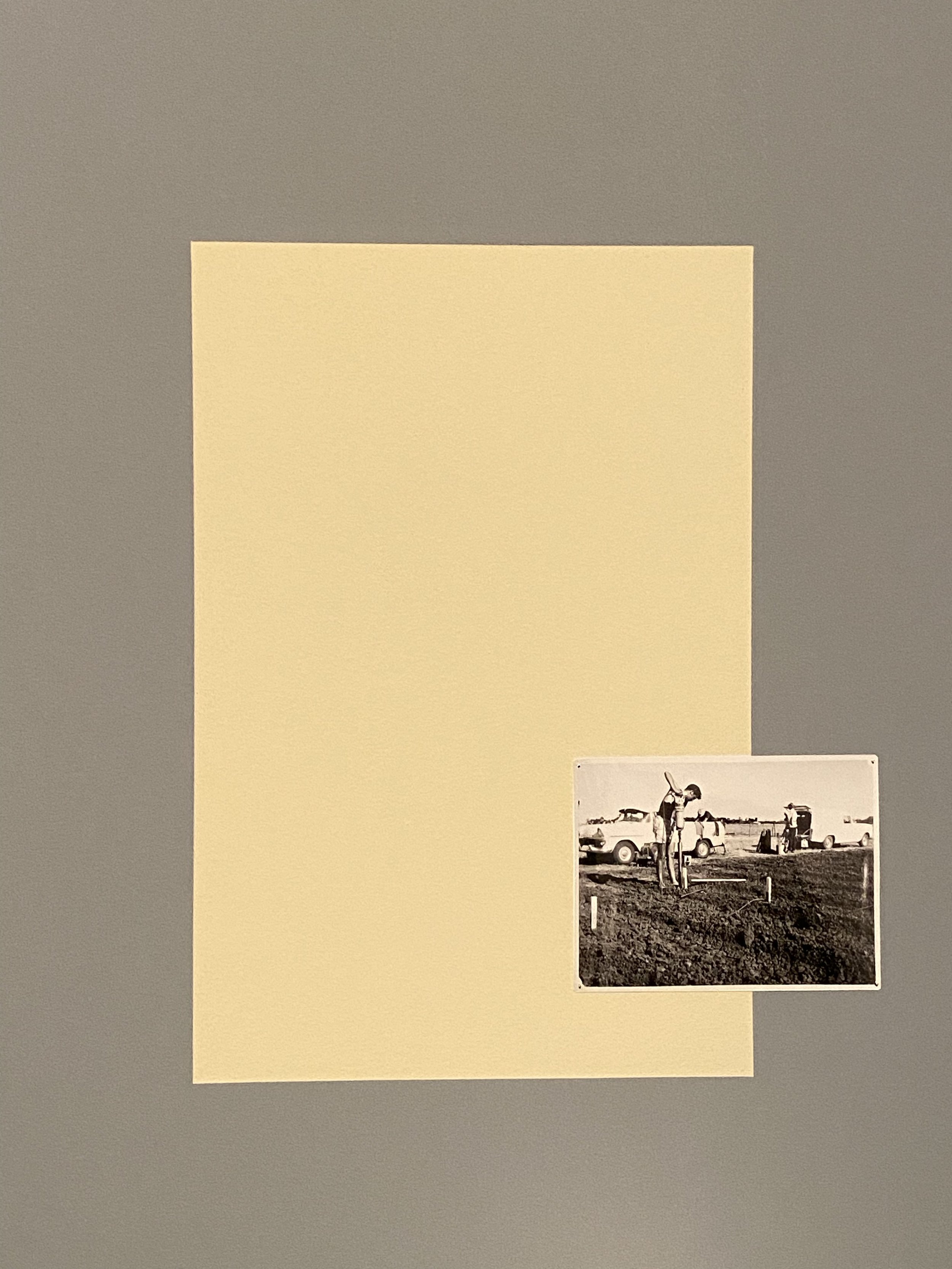
I grew up in the 60s in Broken Hill; my family were generational miners.
Most of the families were either miners or worked in the medical profession, they sort of went hand in hand those days.
My partner was a miner. We met when we were very young—I was only thirteen actually—and we were together for nearly ten years.
He used to work above ground in the mill.
I remember him coming home and he would be covered in black dirt from head to toe
and we would wash the clothes that he was working in at the mine in the washing machine…
Eventually he was put off the mine because he had lead poisoning.
It did affect his personality.
A lot of people who were affected by lead… one of the issues that happens is that it can affect your moods.
I did notice that he would have mood swings and get quite depressed and angry at times.
It's only been in the last, say, twenty years, I guess, that we’ve become more conscious of the lead issues that have been a product of mining in the town.
I've had periods of time where I've felt unwell and had to investigate what was going on
and found out that I also had high levels of lead in my blood.
There's a lead center here.
The government has to advise you that your levels are higher than the national standard, but the letter doesn't really tell you what you can do about it.
As a child I used to play on the local playgrounds where there's dust on the swings, on the ground, and you're ingesting it.
What happened to me was, As I was growing, my bones were absorbing the lead and my teeth were absorbing the lead and then later in life my bones changed...
My bones were shedding back into my blood stream.
I was feeling unwell... hearing noises, with audio, and vision impairment.
It's a peripheral nerve damage, which is what happens with lead poisoning.
Excerpt from an interview with a Broken Hill Resident.
